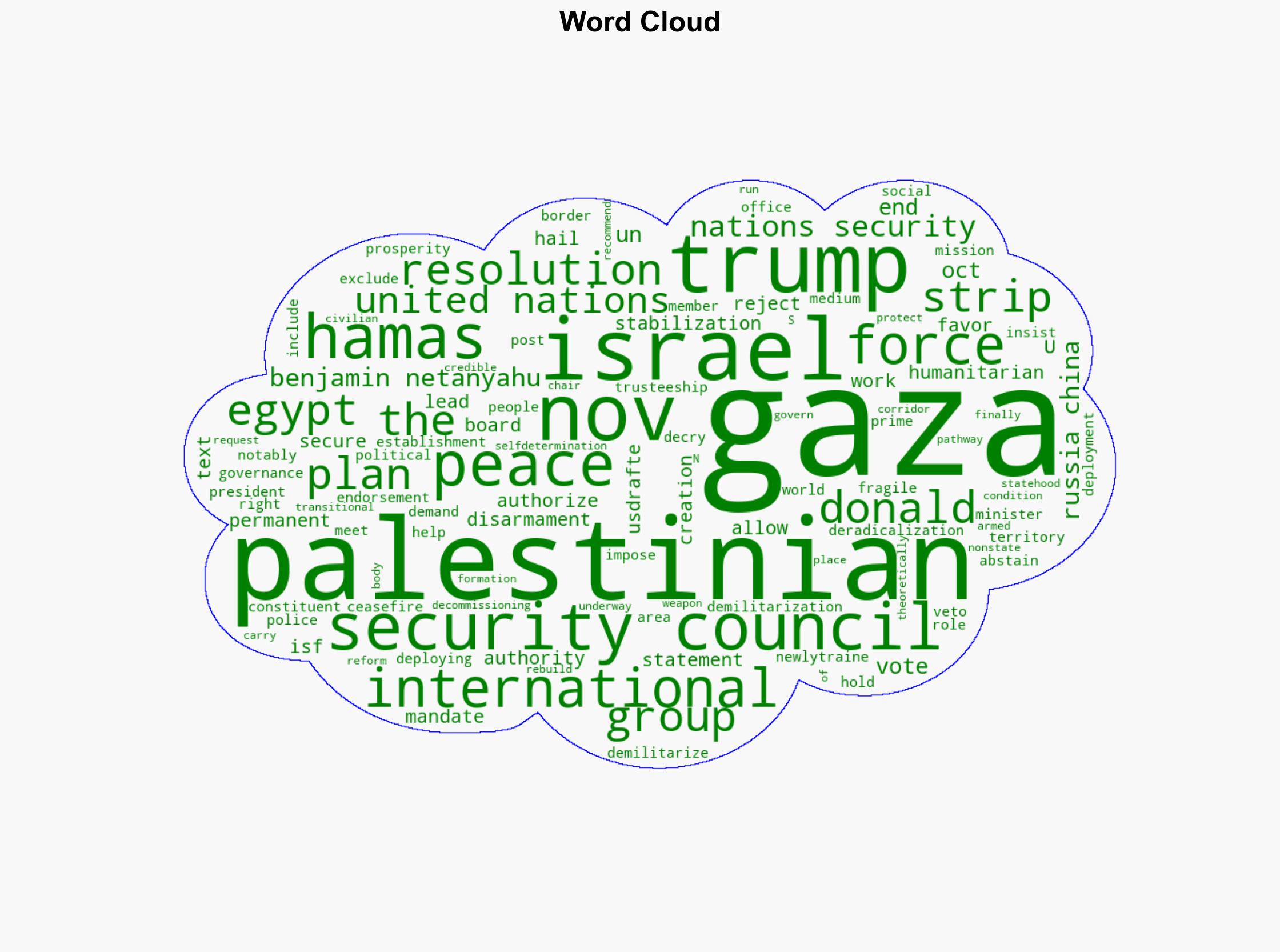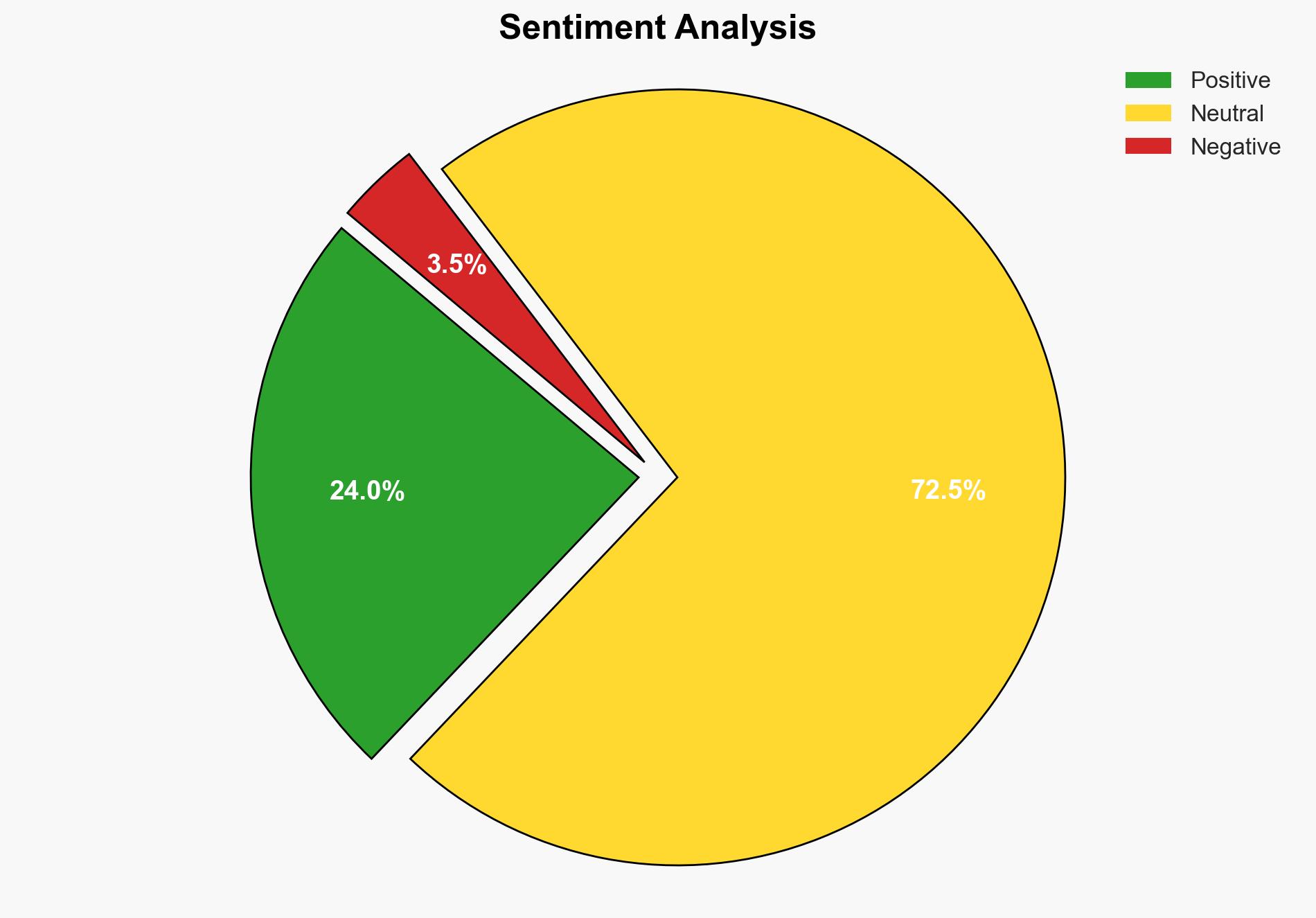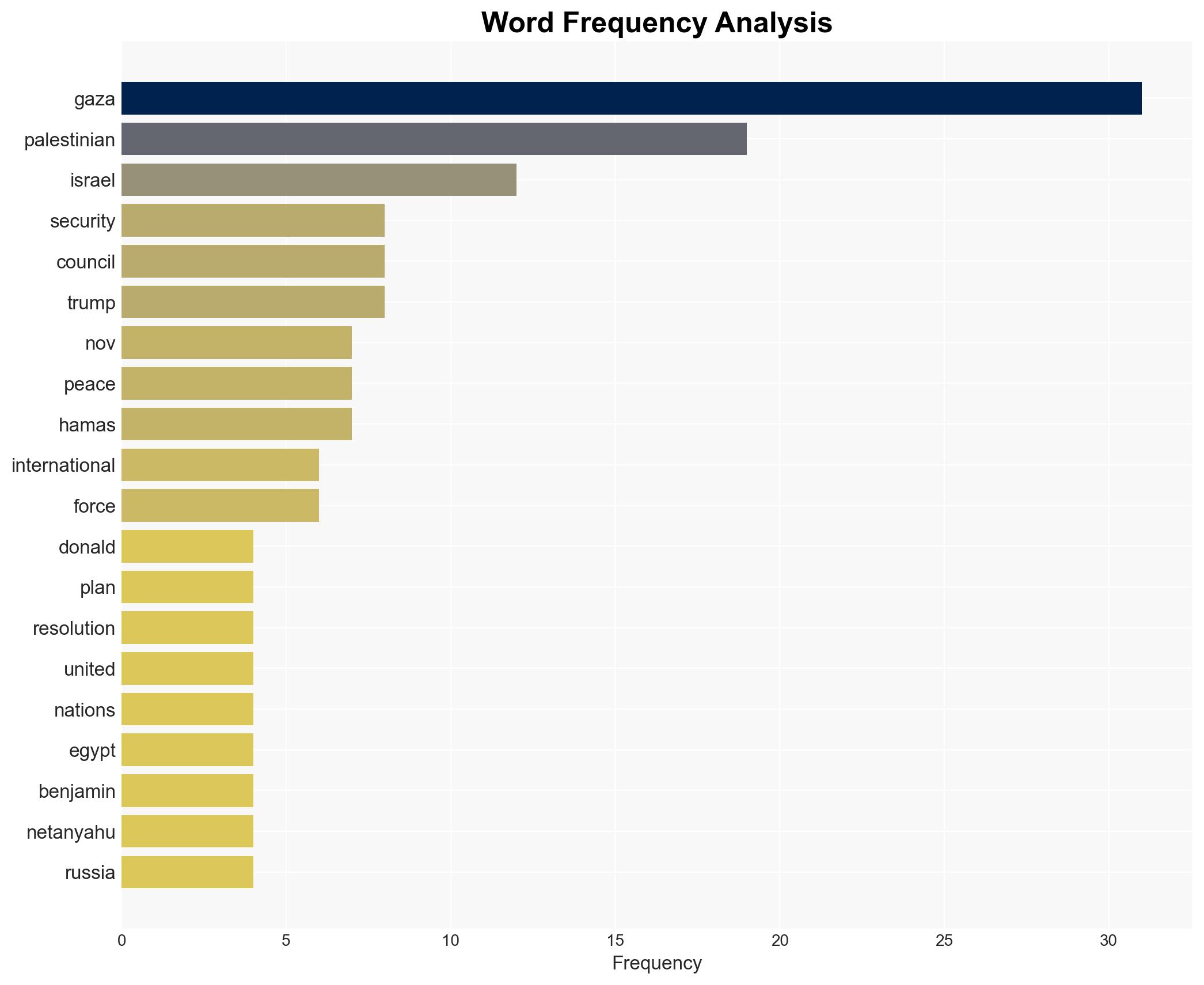UN Security Council votes for international force for Gaza – Hurriyet Daily News
Published on: 2025-11-18
AI-powered OSINT brief from verified open sources. Automated NLP signal extraction with human verification. See our Methodology and Why WorldWideWatchers.
Intelligence Report:
1. BLUF (Bottom Line Up Front)
The most supported hypothesis is that the deployment of an international force in Gaza, as endorsed by the UN Security Council, will face significant resistance from Hamas and other Palestinian factions, potentially leading to increased regional instability. Confidence Level: Moderate. Recommended action includes diplomatic engagement with key stakeholders to address concerns and mitigate potential conflict escalation.
2. Competing Hypotheses
Hypothesis 1: The international force will successfully stabilize Gaza, leading to a reduction in hostilities and a pathway to peace and prosperity as envisioned by the U.S.-drafted resolution.
Hypothesis 2: The deployment of the international force will exacerbate tensions, as it is perceived as an imposition by external powers, leading to increased resistance from Hamas and other factions, thereby destabilizing the region further.
The second hypothesis is more likely due to the outright rejection by Hamas and the exclusion of their governance role, which could lead to increased hostilities and undermine the force’s objectives.
3. Key Assumptions and Red Flags
Assumptions: The international force will be perceived as neutral and legitimate by all parties involved. The Palestinian Authority will be able to implement necessary reforms.
Red Flags: Hamas’s rejection of the resolution suggests potential for armed resistance. The abstention by Russia and China indicates possible geopolitical maneuvering that could undermine the resolution’s implementation.
Deception Indicators: Public endorsements by key figures may not reflect true intentions or capabilities to follow through on commitments.
4. Implications and Strategic Risks
The deployment of an international force could lead to several cascading threats, including:
- Political: Increased polarization within Palestinian territories and among regional actors.
- Cyber: Potential cyber-attacks targeting international forces or supporting nations.
- Economic: Disruption of trade routes and economic activities in the region.
- Informational: Propaganda campaigns by opposing factions to delegitimize the international force.
5. Recommendations and Outlook
- Actionable Steps: Engage in diplomatic dialogue with Hamas and other factions to address grievances. Strengthen communication channels between the international force and local communities to build trust.
- Best Scenario: Successful stabilization of Gaza leading to long-term peace and economic development.
- Worst Scenario: Escalation of violence and regional conflict, undermining international efforts.
- Most-likely Scenario: Initial resistance and instability, with potential for gradual improvement if diplomatic efforts are sustained.
6. Key Individuals and Entities
Donald Trump, Benjamin Netanyahu, Hamas, UN Security Council, Palestinian Authority.
7. Thematic Tags
Regional Focus, Middle East, International Relations, Peacekeeping, Geopolitics
Structured Analytic Techniques Applied
- Causal Layered Analysis (CLA): Analyze events across surface happenings, systems, worldviews, and myths.
- Cross-Impact Simulation: Model ripple effects across neighboring states, conflicts, or economic dependencies.
- Scenario Generation: Explore divergent futures under varying assumptions to identify plausible paths.
Explore more:
Regional Focus Briefs ·
Daily Summary ·
Support us





